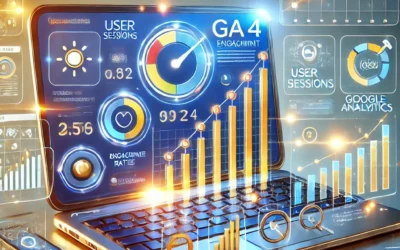Incorporating AI technologies like ChatGPT into your website can significantly enhance user experience and offer personalized interaction, which can increase engagement and improve customer service. Whether you run an e-commerce store, blog, or service-based business, adding AI-powered tools can set your website apart. In this guide, we’ll walk you through the steps to integrate ChatGPT and AI features into your website and discuss the benefits they bring.
1. Why Add ChatGPT to Your Website?
Before diving into the technical steps, it’s essential to understand why integrating ChatGPT or similar AI features is beneficial:
- Improved customer support: ChatGPT can serve as a virtual assistant, helping answer frequently asked questions, troubleshoot issues, and guide visitors to the right pages or resources.
- 24/7 availability: Unlike human agents, AI-powered bots are available around the clock to assist visitors.
- Personalization: AI can analyze user data and tailor responses to individual preferences, increasing the relevancy of interactions.
- Cost savings: By automating routine customer service queries, businesses can reduce the need for large support teams.
2. Choose the Right ChatGPT or AI Solution
There are several ways to integrate AI into your website, and you need to choose the right method based on your specific goals:
- API-based integration: This method is ideal if you have a development team or access to technical expertise. OpenAI, for instance, offers an API that allows you to integrate their models into your own applications.
- Pre-built chatbot platforms: For those without a lot of technical know-how, many platforms like ChatBot, Tidio, and HubSpot offer plug-and-play solutions that allow you to add AI chat features to your site with minimal coding.
- Custom-built AI features: If you have specific use cases in mind, consider hiring a developer to build AI functionalities tailored to your needs.
3. Set Up ChatGPT Using the OpenAI API
If you decide to go with the OpenAI API for ChatGPT, here’s a step-by-step guide to setting it up on your website:
Step 1: Get API Access
First, sign up for API access through OpenAI. You’ll receive API keys that allow your website to communicate with OpenAI’s servers. Make sure to keep these keys secure.
Step 2: Choose a Programming Language
The OpenAI API supports multiple languages, including Python and JavaScript. Choose the language that fits best with your website’s architecture.
Step 3: Write API Calls
Create functions that send user inputs to OpenAI’s servers via the API. Once processed, the AI will return a response that can be displayed to the user in the chat interface. For example, in Python, you might use the requests library to send and receive data.
Step 4: Design the Chat Interface
You’ll need a front-end chat interface for users to interact with ChatGPT. This can be custom-built using HTML/CSS/JavaScript or integrated into an existing design via a plugin.
Step 5: Test and Fine-Tune
It’s crucial to test the system and fine-tune the model’s responses based on user feedback. You can adjust parameters like temperature and response length to optimize how the AI responds.
4. Using Pre-Built Chatbot Platforms
If custom coding isn’t an option, pre-built chatbot platforms make AI integration simple:
- Tidio: A popular option for e-commerce sites, Tidio integrates easily with platforms like Shopify and WordPress. It offers both AI-powered chatbots and live chat features.
- ChatBot: This platform provides templates for various use cases, from customer support to lead generation, with easy integration via WordPress or custom code.
- Intercom: Primarily focused on customer support, Intercom’s AI tools can help automate routine queries while allowing for human handover when needed.
These platforms usually provide an easy interface for customization, enabling you to set up conversation flows, responses, and even integrate with your CRM for better customer insights.
5. Enhance AI with Additional Features
Adding ChatGPT is just the beginning. You can boost the functionality of your website by combining AI with other technologies:
- Voice AI: Integrate voice search or voice commands for users who prefer hands-free browsing.
- AI analytics: Use AI-driven data analytics tools to monitor user behavior, helping you optimize content and product recommendations based on AI insights.
- Recommendation systems: Integrate AI-based recommendation engines to suggest products or content tailored to individual user preferences, increasing conversion rates and engagement.
6. Monitor and Optimize
Once your AI chatbot is up and running, monitoring its performance is crucial. Track metrics such as user engagement, response accuracy, and customer satisfaction to identify areas for improvement. Use user feedback to refine the AI’s responses and continuously enhance the experience.
Final Thoughts
Integrating ChatGPT and AI features into your website can revolutionize how you interact with users, offering a more personalized and responsive experience. Whether you opt for API-based integration or a pre-built platform, the benefits of AI in improving customer service, engagement, and conversions are undeniable. Start exploring how AI can fit into your website strategy today.



0 Comments